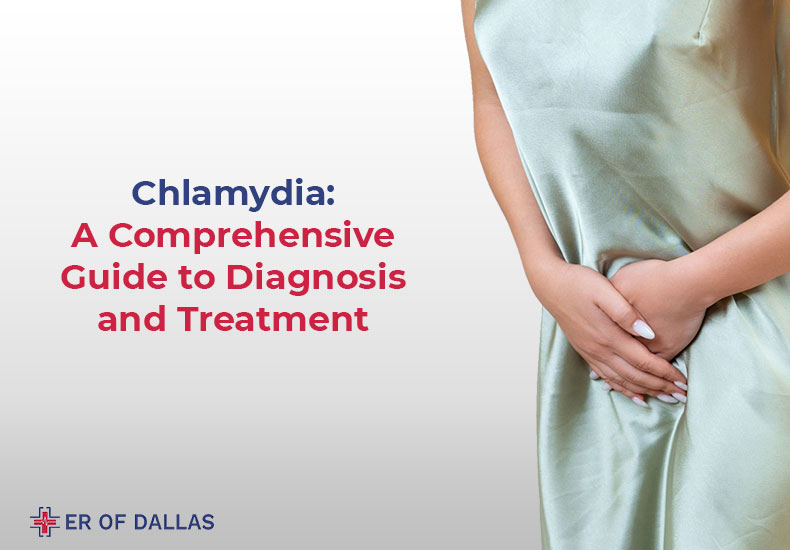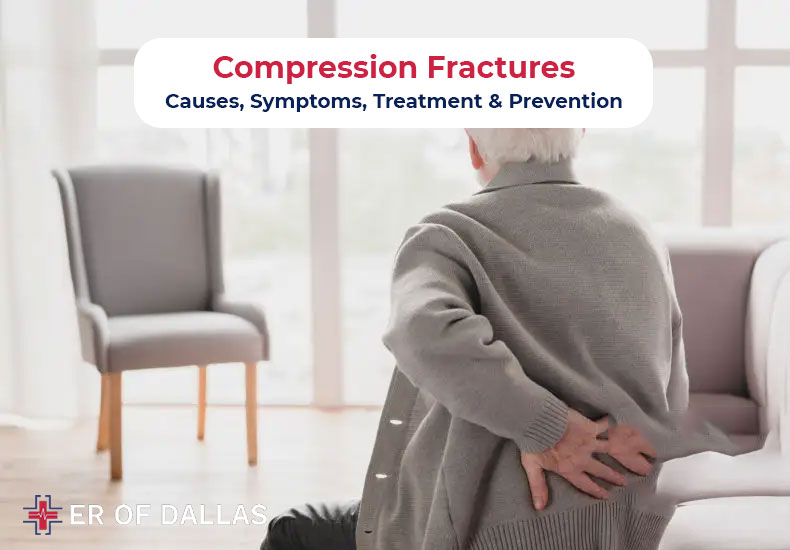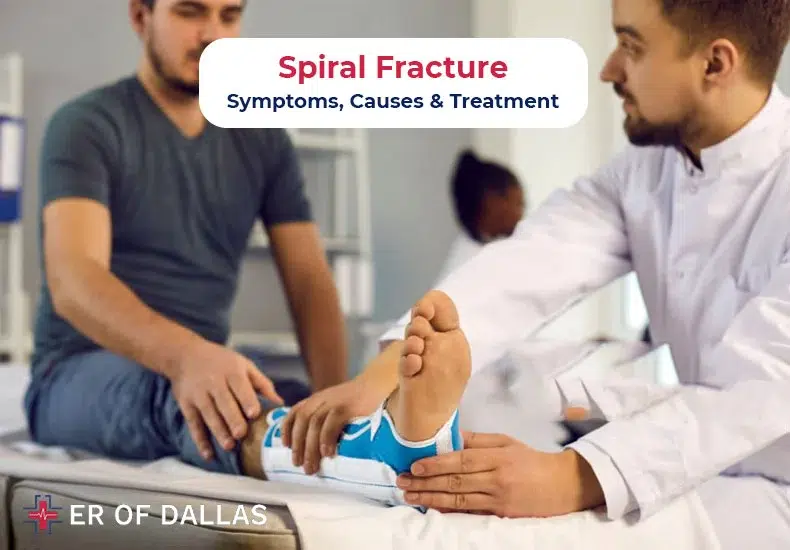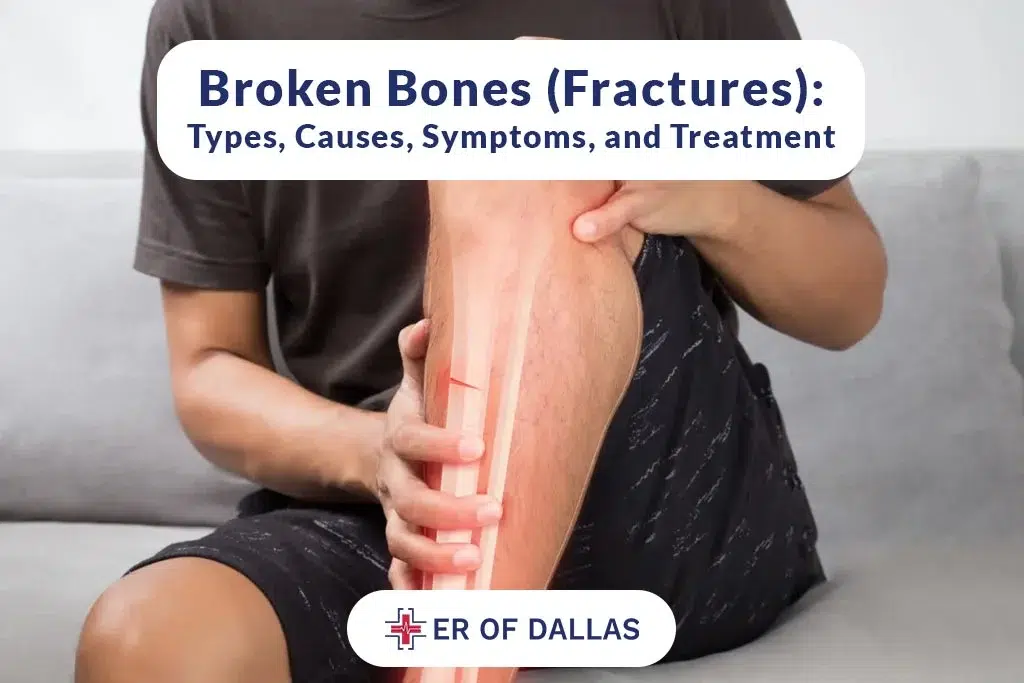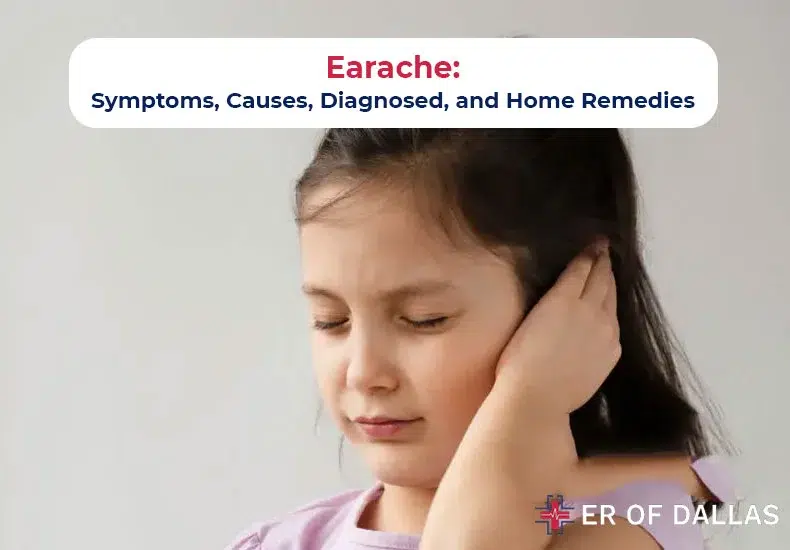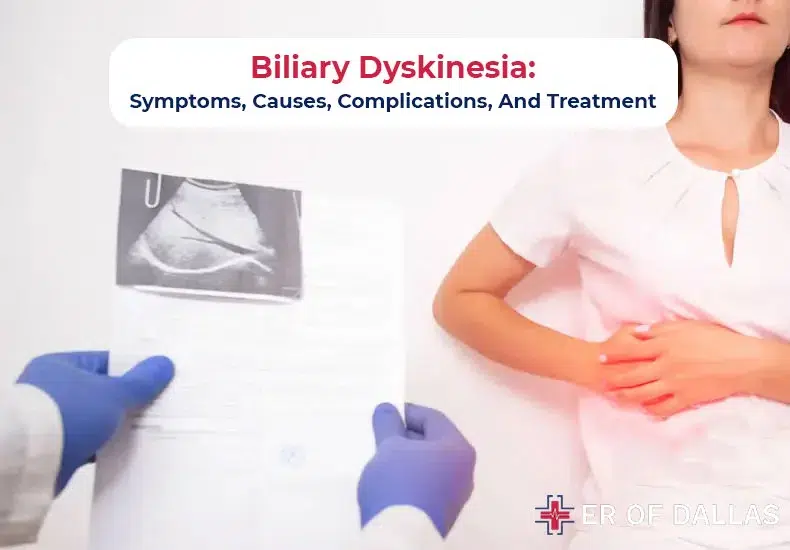As per the Centers for Disease Control and Prevention (CDC), the number of chlamydia cases in the United States in 2018 was approximately 1.8 million. In the United States, it is the most prevalent sexually transmitted infection (STI).
Although chlamydia rarely causes symptoms, it might cause issues with conception. Effective therapy is available, nevertheless.
We’ll talk about chlamydia symptoms, causes, diagnosis, and treatment in this article.
What is Chlamydia?
A frequent sexually transmitted infection (STI) brought on by bacteria is chlamydia. Infections with chlamydia are curable and treated. But frequently, its symptoms go undiagnosed. It’s critical to start chlamydia therapy as soon as possible. If chlamydia is not treated, it might result in major difficulties and irreversible harm to your reproductive organs.
How Does Chlamydia Spread?
When a person has chlamydia, they can transmit it to their partners through oral, anal, or sexual contact. Sharing sex toys with a partner is another way that a chlamydia carrier can spread the infection.
Chlamydia Symptoms
If you do encounter symptoms, they will probably be different depending on whether you have a vagina or a penis. Because the majority of individuals don’t detect symptoms, chlamydia spreads quickly. When symptoms do manifest, they could include pain during urination and an odd discharge.

Signs of Chlamydia in Women And People AFAB
The symptoms of a chlamydia infection frequently resemble those of cervicitis or a urinary tract infection (UTI). You might observe:
- Discharge from your vagina that may smell, whether it be white, yellow, or gray
- Urine with pus in it (pyuria)
- Increased urge to urinate
- Dysuria is the feeling of pain or burning when you urinate
- Bleeding at the intermission
- Painful times
- Painful sexual relations (dyspareunia)
- Burning or itching in the area surrounding your vagina
- Dull abdominal ache in the lower abdomen.
Signs of Chlamydia in Men And People Assigned Male At Birth (AMAB)
The symptoms of chlamydia infection, which most frequently affects the urethra, are comparable to those of nongonococcal urethritis. You might observe:
- Transparent, watery discharge from your penis that resembles mucus.
- Dysuria is the feeling of pain or burning when you urinate.
Additional Chlamydia Symptoms
Other bodily areas outside your reproductive organs that might be impacted by chlamydia include your:
- Anus. Pain, discomfort, bleeding, or a mucus-like discharge from your buttocks may be seen.
- Early chlamydia in the throat. If there is bacteria in your throat, you may have a painful throat, but you won’t normally have any symptoms.
- Eyes. If C. trachomatis germs enter your eyes, you could experience conjunctivitis symptoms. Pain, drainage, and redness are among the symptoms.
Immediately consult your physician if you have any of these symptoms.
How Do You Get Chlamydia?
Sexual contact is the primary means of chlamydia infection transmission, as the bacteria that causes the infection is transferred from one person to another through vaginal fluid or semen. All forms of sexual contact are included, including those that don’t entail ejaculation or penetration. The bacteria that causes chlamydia can be spread through the vaginal secretions of one person in many ways, including:
- Sexual relations. From one person’s penis to their partner’s vagina, or the other way around, bacteria can spread.
- Anal intimacy. From one person’s penis to their partner’s anus, or the other way around, bacteria can spread.
- Verbal intercourse. From one person’s mouth to their partner’s penis, vagina, or anus, or the other way around, bacteria can spread.
- Toy-related sexual activity. From a toy, bacteria can enter a person’s mouth, penis, vagina, or anus.
- Physical stimulation of the anus or genitalia. Less frequently, an illness known as conjunctivitis (pink eye) can result from contaminated vaginal fluid or semen coming into touch with an individual’s eye. This may occur, for instance, if you touch an infected person’s genitalia and then rub your eyes without first washing your hands.
What Doesn’t Cause Chlamydia?
Not every intimate or bodily fluid-exchanging circumstance results in chlamydia. Chlamydia cannot be contracted from:
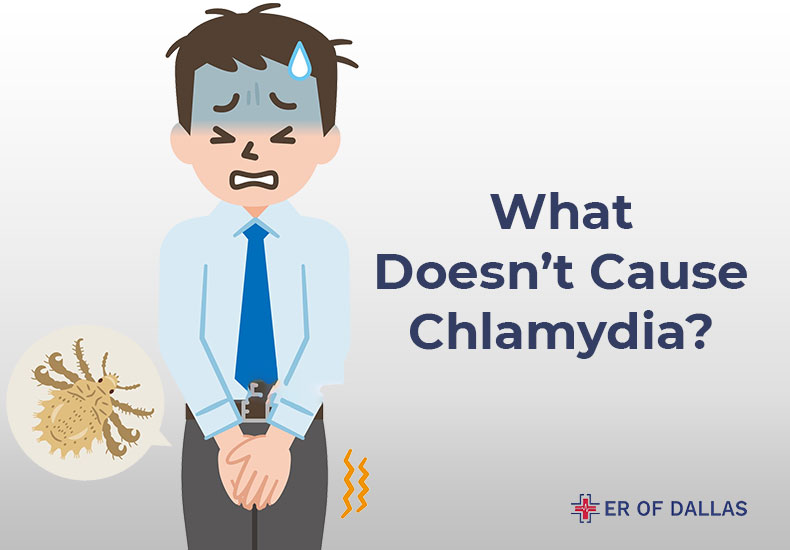
- Kissing
- Distributing meals or beverages.
- Embracing or putting hands together.
- Using the restroom following someone else.
- Taking in droplets from a cough or sneeze.
Can You Get Chlamydia Without Having Sex?
Indeed. There are other ways besides sexual contact to contract chlamydia. You could contract it, for instance, if you share sex devices with someone who is infected.
Chlamydia Long Term Effect?
Sexual activity can infect anyone with chlamydia. The chlamydia bacteria are spread by semen and vaginal secretions. Accordingly, chlamydia can infect anyone who has sex and spread to their partners. You can transmit chlamydia to your unborn child if you are pregnant and have it.
One frequent STD that can infect both men and women is chlamydia. It may harm a woman’s reproductive system irreversibly. Later on, getting pregnant may become difficult or impossible as a result. Additionally, chlamydia can result in an ectopic pregnancy—a pregnancy that develops outside of the womb—which can be devastating.
How Common Is Chlamydia?
The most prevalent STI brought on by bacteria is chlamydia. Every year, reports of chlamydia cases total about 1.5 million. Infection rates are probably much higher. The majority of chlamydia infections are asymptomatic, meaning they show no outward symptoms or indicators of infection. I’m sure a lot of these situations remain undetected.
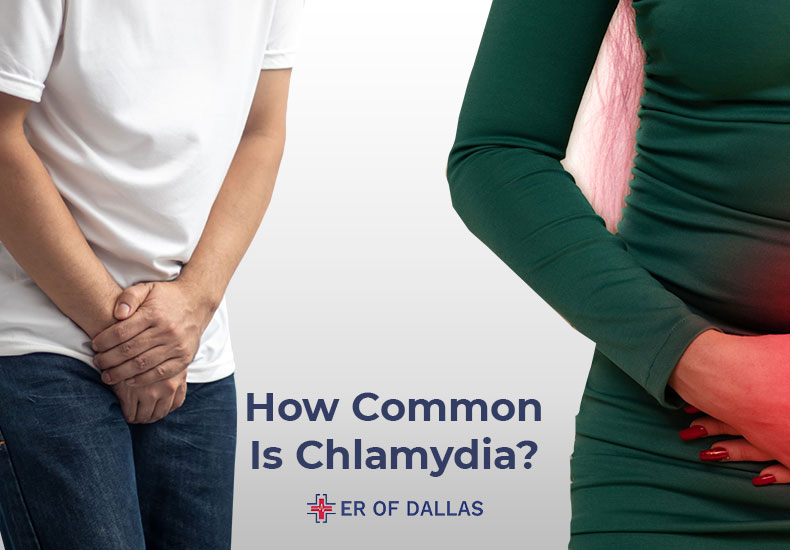
A person’s age, gender, and race may increase the likelihood that they will receive a chlamydia diagnosis. The following people are more susceptible to chlamydia:
- 15–24 year old adolescent or young adult. This age group accounts for more than half of all diagnosed cases of chlamydia in the United States. For women or those classified as female at birth (AFAB), the rate is greater. For this reason, if you’re AFAB and between the ages of 15 and 24, healthcare professionals frequently advise getting screened for chlamydia.
- Man having sex with other men (MSM). Compared to people who have sex with women or people AFAB, men or people assigned male at birth (AMAB) who have intercourse with other males or partners AMAB is disproportionately affected by chlamydia infections.
- Non-Hispanic black. Non-Hispanic Black populations are disproportionately affected by chlamydia infections.
Increased rates of transmission within specific groups are more related to networks and limited access to tools for STI prevention than they are to sexual activity. For instance, in areas with greater infection rates, chlamydia is more likely to be transmitted from person to person. Furthermore, it’s more likely to spread among populations without simple access to STI prevention tools like condoms and dental dams or sex education.
The Centers for Disease Control and Prevention (CDC) advises having a chlamydia test as part of your routine health care.
How Long Can You Have Chlamydia Without Knowing?
Regardless of assigned sex, between 50% and 70% of persons with chlamydia never have symptoms, which is why the disease is commonly referred to as a silent infection.
Even those with symptoms frequently don’t realize they have chlamydia until a few weeks after contracting the infection. Since chlamydia infections frequently have no symptoms, it is simple to inadvertently infect someone else. Furthermore, it’s simple to neglect getting the care required to stop the dangerous side effects of chlamydia.
The majority of individuals get chlamydia symptoms one week to three months following unprotected sex. However, it may require more time than three months. When diagnosing the infection, your healthcare professional could discover further details about it. For instance, a healthcare professional might be able to determine whether the virus has reached your testicles or fallopian tubes. If you engage in sexual activity, it’s critical to get tested for STIs regularly because you might not be aware that you’re infected.
How is Chlamydia Diagnosed?
The nucleic acid amplification test is the most widely used test for chlamydia (NAAT). Using a vaginal or cervical swab or gathering a urine sample, your healthcare professional obtains a sample of fluid. After that, the sample is sent to a lab to be tested for the chlamydia-causing bacteria. Your physician may request that you do an at-home chlamydia test, or they may conduct the test in their office. To guarantee you obtain reliable test results, please follow the directions provided by your provider.

Even if you don’t see any symptoms of infection, it’s still vital to get checked for chlamydia because the majority of cases are asymptomatic. The CDC advises routine screening for chlamydia in AFAB individuals and sexually active women. People who have a vaginal tract are more likely than those who have a penis to get serious chlamydia problems. Anyone who has a vagina should therefore get routine screenings.
You are said to be at high risk if you:
- Younger than 25.
- Get a new companion.
- Possess several partners.
- Possess a history of chlamydia infections.
Males or individuals with AMAB should be tested for chlamydia if:
- You visit or reside in an environment where chlamydia is commonly distributed, such as a sexual health clinic, an adolescent clinic, or a correctional facility.
- You have relationships with men or individuals AMAB.
Talk to your healthcare practitioner about your sexual history and activities, regardless of your age, reproductive structure, or other risk factors. The best person to advise you on how frequently to get tested for chlamydia and other STIs is your physician at urgent care or hospital.
How is Chlamydia Treated?
Antibiotics can eradicate chlamydia within a week or two. But even if your symptoms become better, don’t cut back on your prescription. Find out from your doctor what steps need to be taken after you stop taking your medication to ensure that your infection has cleared up. An illness with chlamydia may return.
Avoiding sexual acts that can re-infect you and making sure that any potentially infected sexual partners receive treatment should also be part of your treatment plan. You ought to:
Till your infection has cleared completely, avoid having sex. You’re not out of the woods after you start treatment. As instructed by your doctor, take all of your medications, and wait to engage in any sexual activity.
Make contact with every sexual partner. Notify your past three months’ worth of sexual partners that you are sick so they can get tested as well.
Obtain testing for gonorrhea, syphilis, herpes, HIV/AIDS, and other STIs. Multiple STIs are common, and it’s critical to get therapy specific to each infection.
Although they can eliminate your infection, antibiotics cannot undo whatever damage the bacteria may have already done to your body before therapy.
What Defenses Are There Against Chlamydia?
Refusing to have vaginal, anal, or oral intercourse with an infected person is the only way to prevent contracting chlamydia. Additionally, make sure that your genitalia are kept separate from sex devices that may harbor the infection.
However, since many chlamydia patients never experience symptoms, it’s not always easy to determine if a present or prospective partner has the disease. It’s a good idea to incorporate safer sex practices into your normal sex life with prevention in mind:
- When having oral, anal, or intercourse, always use condoms.
- When having oral sex or vagina-to-vagina contact, use dental dams.
- Sex toys should never be shared, but if they are, wash them after each use and use a condom to cover the objects used for penetration.
- You should only have sex with one partner at a time.
FAQs
What is the Difference Between Chlamydia vs Gonorrhea?
Different microorganisms cause gonorrhea and chlamydia. Although both sexually transmitted infections (STIs) are caused by bacteria, the bacteria responsible for Chlamydia and Gonorrhea are distinct. While Neisseria gonorrhoeae bacteria cause gonorrhea, Chlamydia trachomatis is the cause of chlamydia.
What Does Chlamydia Look Like?
A medical exam is the only way to determine if you have chlamydia. The majority of female chlamydia patients do not exhibit any symptoms. If you are sexually active and 25 years of age or younger, be tested for chlamydia annually by visiting your healthcare provider.
Can You Get Chlamydia From Kissing?
You CANNOT obtain chlamydia by sharing food or drinks, kissing, hugging, holding hands, coughing, sneezing, or sitting on the toilet since the infection cannot be contracted by casual touch. The best strategy to help prevent chlamydia is to use condoms and/or dental dams every time you have sex.
Are You Guaranteed To Get Chlamydia If Your Partner Has It?
Is it possible to have unprotected intercourse with someone who has gonorrhea or chlamydia and not become infected? It is improbable that one will remain uninfected after engaging in vaginal, oral, or anal intercourse with an infected partner. Visit the “Prevention” link on the main page for additional details.
What Antibiotics Treat Chlamydia?
However, if the diagnosis is highly likely to be an infection, you may begin treatment before receiving your results. For treating chlamydia, the two most often prescribed antibiotics are doxycycline, which is taken once daily for a week. Azithromycin: 500 mg once daily for two days after a single 1g dose.
How To Cure Chlamydia Without Going To The Doctor?
Overall, there isn’t a scientifically supported natural treatment for chlamydia. Getting in touch with your doctor and starting antibiotic therapy is the best strategy to treat an STI. The most typical course of treatment involves doxycycline and azithromycin.
Takeaway
Speaking with your healthcare practitioner about anything sexual, especially STI prevention, can be awkward. However, your sexual life is a significant aspect of your health that your healthcare professional must be aware of in order to treat you. Ignoring the need for chlamydia treatment can put your health at risk. To lower your chance of issues, talk to your provider about getting screened for chlamydia and other STIs frequently. To stop chlamydia from spreading, have safer sexual relations.
Your doctor at the ER of Dallas will advise antibiotics if you have chlamydia, as they are an effective treatment for the infection. Additionally, let everyone know if you had sex within 60 days of receiving a chlamydia diagnosis so they may get tested and treated if necessary.

